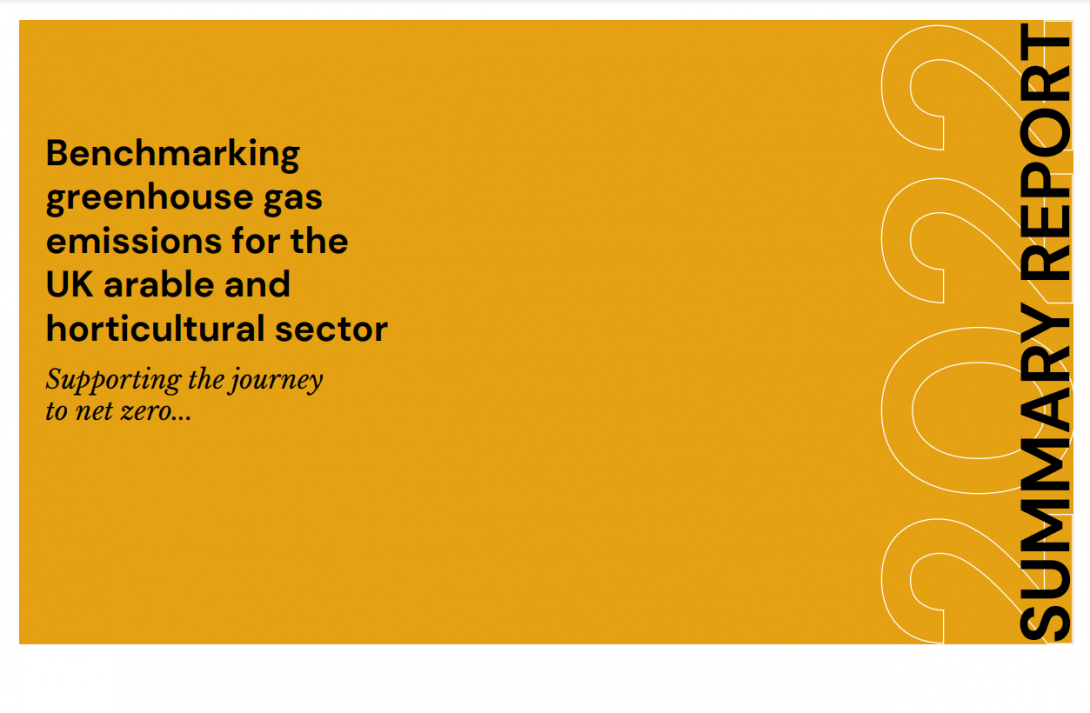Benchmarking greenhouse gas emissions for the UK arable and horticultural sector; supporting the journey to net zero

A joint report from Crop Health and Protection (CHAP) and AHDB, that aimed to determine a baseline benchmarking for carbon levels in the UK farming sector.
There currently lacks a robust and reliable value for the baseline level of carbon stored and produced on farms due to variance in the way that carbon is calculated. Knowing the baseline is essential to then achieve the rate of change necessary to meet net zero targets, as well as making comparisons with international competitors. This report reviewed the existing greenhouse gas (GHG) emission databases of assessments completed on arable and horticultural crops in the UK and from some international comparators. The assessments used a range of tools and methods.
This review sets the benchmark GHG emissions for the most important UK crops.
Executive summary:
Whilst agriculture is a significant contributor to greenhouse gas (GHG) emissions in the UK and globally, farmers also manage some of the largest stores of GHGs on earth, which offers a unique potential to mitigate climate change. The UK government’s 2019 Greenhouse Gas Emissions report estimated the sector was directly responsible for around 10% of UK emissions. To address this, in 2019 the NFU set an ambition for agriculture in England and Wales to reach net zero by 2040 – 10 years ahead of the UK government’s 2050 net zero target. Meeting those targets will require us to continue to transform current farm practices and to develop new technologies. Critically, the arable and horticultural sector needs to better understand the full extent of emissions generated by growing crops, to enable identification of hotspots and opportunities to reduce them.
Reaching net zero in the arable and horticultural sector may not seem easy, but is achievable. Farming’s unique ability to capture carbon from the atmosphere underpins the opportunity to deliver net zero for farming, as well as the potential to support other UK sectors to reach net zero, provided that a robust and viable value can be placed on this carbon. Without baseline benchmarking, we cannot define our starting point and it becomes difficult to achieve the rate of change necessary, or make comparisons with international competitors; that is why this report was commissioned.
Driving reductions in the climate impact of production can be achieved through reducing emissions from the manufacture and use of nitrogen fertiliser, fuel, and energy use associated with storing produce, in particular. These positive actions will reduce emissions per hectare and absolute emissions, while maintaining or increasing production. Residual emissions can be balanced by enhancing carbon capture on farm (both nature-based and engineered carbon removals), and it is also important to protect carbon already stored in soils, grassland and woodlands. All farmers can continue to make improvements to their resource efficiency to reduce emissions, while in the medium-term new technologies to help decarbonise some of the embedded emissions in raw materials brought onto farm will help. Carbon sequestration in vegetation and soils offers a valuable tool for achieving net zero, although uncertainties make it crucial to better understand permanence or dynamic stability (long-term storage), when saturation will occur (for example, there is only a finite amount of carbon that can be stored in soils), and the impact of actions on leakage (moving carbon from one location to another). Longer term, optimising land use for production and “carbon farming” (both nature-based and engineered) may offer greater opportunities for farmers to participate in carbon removals, but funding through public or private mechanisms will be vital. Innovation within the agricultural sector is key to supporting farmers and the wider industry to be ambitious and to achieve this goal, which will also deliver broader sustainability co-benefits. In working towards net zero, farmers could save themselves resources and money, and also boost their farm’s resilience to extreme weather. By working in harmony with other food-system interventions, namely cutting food waste and responding to shifts in dietary preferences, the wider industry can maximise its success. This document summarises a report commissioned by the Agriculture and Horticulture Development Board (AHDB) and Crop Health and Protection (CHAP), which further explores this important topic.

